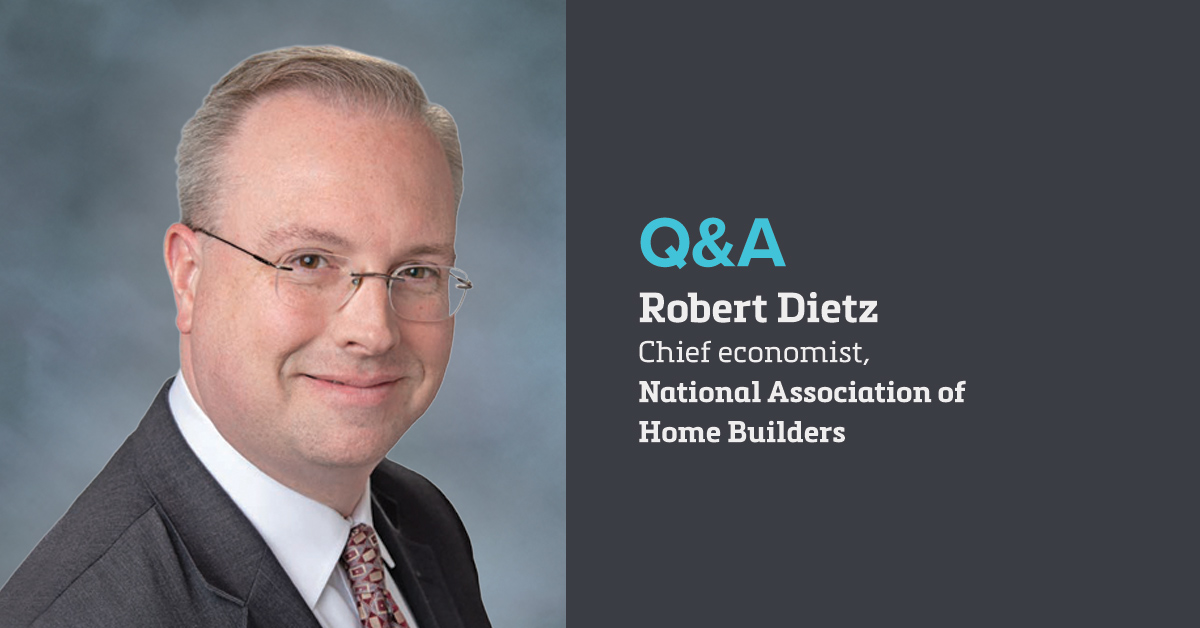The term “housing bubble” is frequently being bandied about by homebuyers and sellers. The Google search term, “When is the housing market going to crash?” jumped by 2,450% this past April compared to the previous month.
Housing prices are increasing dramatically — and unsustainably, said Robert Dietz, chief economist for the National Association of Home Builders. But this isn’t a repeat of the housing crisis of more than a decade ago. The housing crisis of the late 2000s was driven by investors, home flippers and loose underwriting standards, Dietz said.
Today, however, sky-high home prices are driven by a confluence of factors including demographics, low interest rates and a chronic shortage of housing. Don’t expect home prices to pop. Instead, prices will likely cool as interest rates climb, which will hurt the prospects of first-time homebuyers.
“You’ve got to feel for those younger households that want to get into homeownership and simply cannot given the growth in pricing,” said Dietz, who spoke to Scotsman Guide about the housing shortage, what can be done to fix it and what will happen with construction if interest rates rise too high.
What are the reasons for the housing shortage?
We simply haven’t built enough homes over the last decade, certainly not in the years after the Great Recession. We entered 2020 with a housing deficit, and then you get the surprise side effects that came about due to the COVID-19 crisis, a shift in consumer preferences due to telecommuting, historically low interest rates and then demographics. The leading edge of millennials was right around age 41. And that’s prime first-time homebuying years.
Why haven’t more homes been built?
There are limits to how much production the industry can accomplish in a given year. We’ve talked before about the labor shortage, the available lots and land in the pipeline. And then, the challenge in 2020, without a doubt, when you’re talking to builders, is lumber and building materials. Ninety percent of builders say that they’re seeing delays with appliances and other kinds of materials to work sites that’s extending construction times.
If you wave your magic wand, what could fix this?
I would increase the domestic supply of lumber. If we could just magically create additional mills that could then hook up with loggers who’ve got the fiber ready to go, that would really help bend that cost curve. In the long run, it’s more complicated. I’ve referred to these as the five L’s — labor, lots, lending, laws, and lumber and materials. It’s about improving the availability of skilled labor and improving the regulatory environment connected with land development.
Could a $2 trillion-plus infrastructure package undercut home construction with competition for supplies and labor?
Any infrastructure package has to have workforce development. I am concerned about a really large amount of additional infrastructure spending without improvement to the supply chains. An infrastructure package that’s large, that doesn’t include costly tax hikes but does provide resources for labor and for building-material supply chains, would seem to work out. The devil is in the details on this.
What else should the Biden administration do regarding supply?
This is something the Trump administration had worked on — using the tools of the federal government to encourage state and local governments to come up with a more efficient zoning and regulatory policy. A lot of that is not controlled by the federal government. It’s at the local level. You could imagine how maybe grant programs or pilot programs could be tied to the idea of communities that are showing progress in building more of the missing middle, [such as] allowing townhouse construction. ●



